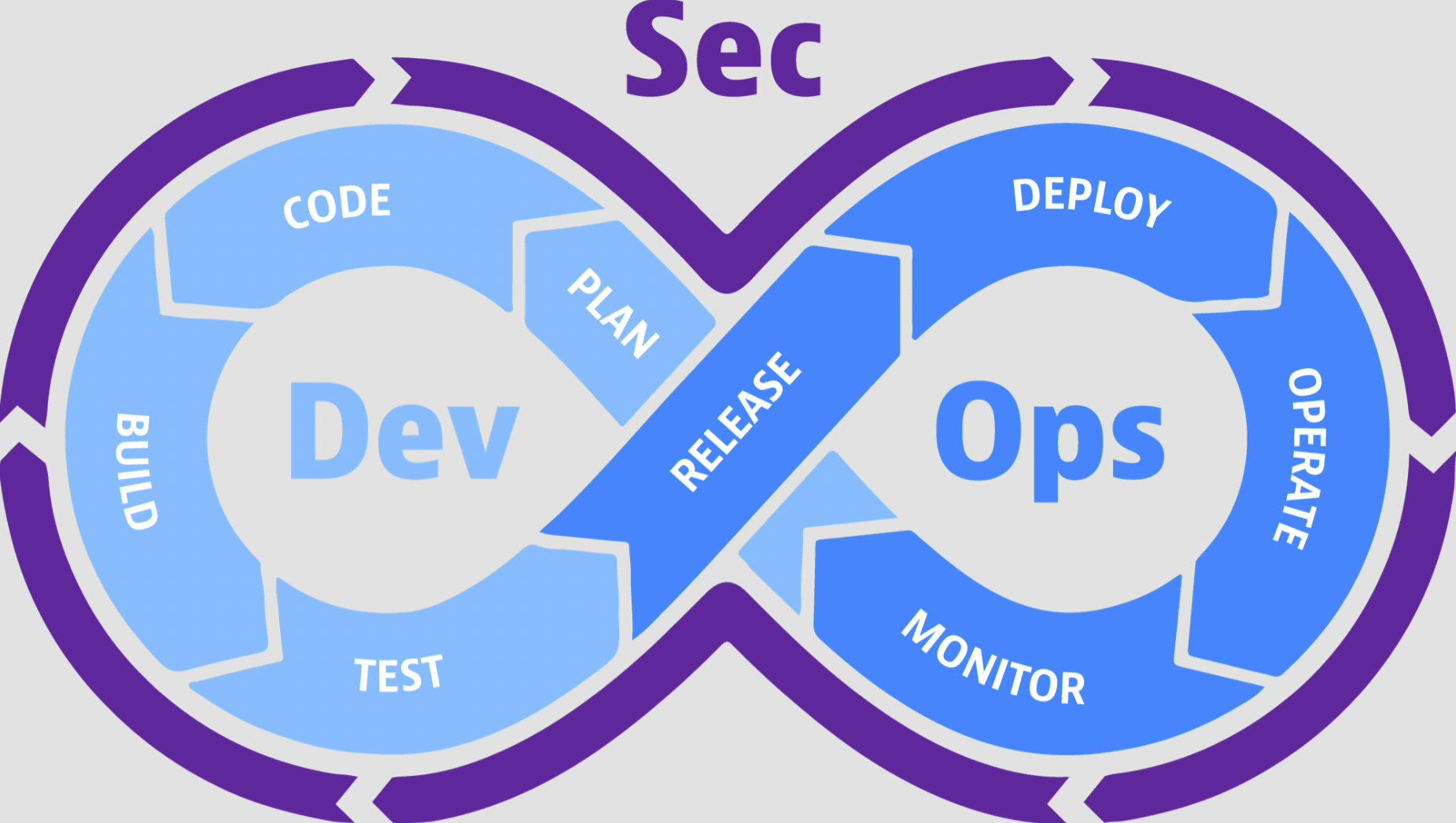
Table of Contents
What is DevSecOps?
DevSecOps is a software development methodology that emphasizes security at every stage of the DevOps life cycle. By integrating security into the DevOps process, organizations can reduce their exposure to risk and ensure compliance with security policies and regulations.
There are many DevSecOps tools available to help organizations automate security tasks and integrate security into their DevOps processes.
We’ll cover some of the best DevSecOps tools below.
Best DevSecOps Tools of 2025
Some of the best DevSecOps tools include:
#1 Puppet
Puppet is a configuration management tool that helps organizations automate the provisioning and management of their IT infrastructure.
Puppet can be used to automate security tasks such as patch management, vulnerability scanning, and intrusion detection.
#2 Chef
Chef is a tool for IaC and DevSecOps deployments on different cloud providers such as AWS, GCP, and Azure Cloud
It uses simple YAML files to define infrastructure as code and includes many built-in modules for provisioning resources such as VPC, IAM, and RDS.
The enterprise version includes additional features such as role-based access control, auditing, and collaboration tools.
#3 Ansible
Ansible is an IaC tool that automates configuration management, application deployment, and task execution.
It uses an agentless architecture, which means that it does not require any software to be installed on managed hosts.
Ansible is open source and has a large community of contributors.
#4 Terraform
Terraform is an open-source infrastructure as code software tool that enables you to safely and predictably create, change, and improve infrastructure.
Terraform is a popular DevSecOps tool that allows users to define infrastructure as code using a declarative programming language.
Terraform can be used to provision resources on any cloud platform, including AWS, Azure, and Google Cloud Platform (GCP).
Terraform is open source and has a large community of contributors.
#5 Hashicorp Vault
Vault secures, stores, and tightly controls access to tokens, passwords, certificates, API keys, and other secrets in modern computing.
#6 AWS CloudFormation
AWS CloudFormation is an IaC tool from Amazon Web Services (AWS).
It allows users to create templates that define the configurations for AWS resources.
These templates can be used to provision and manage AWS resources in a consistent and automated way.
CloudFormation is available at no additional cost to AWS customers.
#7 Azure Resource Manager
Azure Resource Manager is an IaC tool from Microsoft Azure.
It uses the Azure Resource Manager template (aka ARM templates) to handle infrastructure and dependencies.
Resources can be organized into groups, control access levels to resources, and so on.
Azure supports Role-Based Access Control (RBAC) natively so controlling access to resources and services is easier.
Exploring the tools for DevSecOps in a CI/CD pipeline on Azure
DevSecOps vs. DevOps
Now that we’ve covered some of the best DevSecOps tools, let’s compare DevSecOps to DevOps.
DevOps is a software development methodology that emphasizes communication, collaboration, and integration between developers and operations staff.
DevOps is designed to improve the speed and quality of software delivery.
DevSecOps is a variation of DevOps that emphasizes security at every stage of the DevOps life cycle.
DevSecOps aims to reduce the exposure to risk and ensure compliance with security policies and regulations.
While DevOps automates the software development process, DevSecOps goes one step further by automating security tasks such as vulnerability scanning and patch management.
In sum, DevSecOps is a variation of DevOps that focuses on security.
What is DevSecOps? DevSecOps explained in 8 minutes
What do DevSecOps tools do?
DevSecOps tools can be used to automate security tasks such as patch management, vulnerability scanning, and intrusion detection.
DevSecOps is a relatively new concept, and the tools and practices are still evolving.
As DevSecOps matures, we expect to see more DevSecOps tools and best practices emerge.
DevOps security is built-in
DevSecOps tools help DevOps teams to embed security into their workflows from the beginning.
This shift in thinking about security can help to reduce the risk of data breaches and other security incidents.
How can DevSecOps tasks be automated?
Some common DevSecOps tasks that can be automated include:
– Patch management: Automatically install security updates and patches as soon as they are released.
– Vulnerability scanning: Regularly scan for vulnerabilities in systems and applications.
– Intrusion detection: Monitor systems for suspicious activity and investigate potential threats.
– Compliance monitoring: Ensure that systems and processes comply with industry regulations and standards.
DevOps security is automated
DevOps teams can use DevSecOps tools to automate security tasks.
This shift in thinking about security can help to reduce the risk of data breaches and other security incidents.
DevOps teams can use DevSecOps tools to automate security tasks such as patch management, vulnerability scanning, and intrusion detection.
Automating these tasks allows DevOps teams to focus on their core workflows and deliver software faster.
What are some benefits of DevSecOps?
Some benefits of DevSecOps include:
– Improved security: By shifting security to the left, DevSecOps teams can find and fix security issues earlier in the software development life cycle.
– Reduced risk: Automating security tasks helps to reduce the exposure to risk and ensure compliance with security policies and regulations.
– Faster software delivery: DevSecOps teams can focus on their core workflows and deliver software faster.
– Improved communication and collaboration: DevSecOps emphasizes communication and collaboration between developers and operations staff. This can help to improve the speed and quality of software delivery.
What are some challenges of DevSecOps?
Some challenges of DevSecOps include:
– Cultural change: DevSecOps requires a cultural shift in the way that organizations think about security.
DevSecOps teams need to be able to work quickly and efficiently while still maintaining high levels of security.
– Implementation: DevSecOps is a relatively new concept, and the tools and practices are still evolving.
Organizations need to carefully consider how DevSecOps will be implemented in order to avoid disruptions to the software development process.
– Training and skills: DevSecOps requires a new set of skills and knowledge.
Organizations need to provide training for DevOps teams so that they can effectively implement DevSecOps practices.
DevOps security is built for containers and microservices
DevSecOps tools can help DevOps teams to secure their containerized applications and microservices.
DevSecOps is a relatively new concept, and the tools and practices are still evolving.
As DevSecOps matures, we expect to see more DevSecOps tools and best practices emerge.
In the meantime, here are some DevSecOps tools that can help you to secure your containers and microservices:
– Anchore: A tool for analyzing, inspecting, and securing Docker images.
– Aqua Security: A tool for securing container-based applications and microservices.
– Twistlock: A tool for securing containers in production environments.
– Sysdig Secure: A tool for monitoring and securing containers in real time.
– NeuVector: A tool for securing containers with intrusion detection and prevention.
DevOps teams can use DevSecOps tools to automate security tasks such as patch management, vulnerability scanning, and intrusion detection.
Automating these tasks allows DevOps teams to focus on their core workflows and deliver software faster.
DevSecOps – FAQs
What is the difference between DevSecOps and agile?
DevSecOps is an extension of the agile software development methodology that emphasizes security at every stage of the DevOps life cycle.
Agile focuses on speed and collaboration, while DevSecOps adds a focus on security.
What are the benefits of DevSecOps?
There are many benefits to DevSecOps, including increased security, faster time to market, and reduced costs.
By integrating security into the DevOps life cycle, organizations can reduce their exposure to risk and improve their overall security posture.
What are some DevSecOps best practices?
Some DevSecOps best practices include automating security testing, integrating security into the software development life cycle, and using DevOps tools and processes to secure infrastructure.
By following these best practices, organizations can improve their DevOps security posture.
What is the DevSecOps pipeline?
The DevSecOps pipeline is the process that developers use to build, test, and deploy code.
DevSecOps adds a focus on security to this process, ensuring that code is secure before it is deployed.
What are DevSecOps tools?
DevSecOps tools are tools that help organizations automate security testing and integrate security into the software development life cycle.
Some popular DevSecOps tools include Puppet, Chef, and Ansible.
How do I get started with DevSecOps?
If you’re interested in getting started with DevSecOps, there are a few things you can do to get started.
First, you can automating security testing and integrating security into your software development life cycle.
You can also use DevOps tools and processes to secure your infrastructure.
Finally, you can follow DevSecOps best practices to improve your DevOps security posture.
What is the future of DevSecOps?
The future of DevSecOps is bright. As organizations continue to adopt DevOps, they will also need to adopt DevSecOps to ensure that their code is secure.
DevSecOps will help organizations improve their security posture and reduce their exposure to risk.
What are some DevSecOps challenges?
There are a few DevSecOps challenges, including integrating security into the DevOps life cycle and automating security testing.
However, these challenges can be overcome with the right tools and processes.
How do I implement DevSecOps?
Implementing DevSecOps can be done by automating security testing, integrating security into the software development life cycle, using DevOps tools and processes to secure infrastructure, and following DevSecOps best practices.
Is DevSecOps a methodology or framework?
DevSecOps is a methodology that emphasizes security at every stage of the DevOps life cycle.
DevSecOps is an extension of the agile software development methodology that adds a focus on security.
What are some DevSecOps tools?
Some DevSecOps tools include Puppet, Chef, and Ansible.
These tools help organizations automate security testing and integrate security into the software development life cycle.
How can DevOps and security work together?
DevOps and security can work together by integrating security into the DevOps process.
By doing this, organizations can reduce their exposure to risk and improve their overall security posture.
What are some DevSecOps principles?
Some DevSecOps principles include automating security testing, integrating security into the software development life cycle, and using DevOps tools and processes to secure infrastructure. By following these principles, organizations can improve their DevOps security posture.
What are some DevSecOps benefits?
Some DevSecOps benefits include increased security, faster time to market, and reduced costs.
By integrating security into the DevOps process, organizations can reduce their exposure to risk and improve their overall security posture.
Are DevOps and DevSecOps the same thing?
No, DevOps and DevSecOps are not the same thing.
DevOps is a software development methodology that emphasizes speed and collaboration.
DevSecOps adds a focus on security to this methodology.
What is the difference between DevOps and DevSecOps?
The difference between DevOps and DevSecOps is that DevOps is a software development methodology that emphasizes speed and collaboration, while DevSecOps adds a focus on security.
Conclusion
DevSecOps is a methodology that emphasizes security at every stage of the DevOps life cycle.
DevSecOps is an extension of the agile software development methodology that adds a focus on security.
DevSecOps helps organizations automate security testing and integrate security into the software development life cycle.
DevSecOps can be implemented by automating security testing, integrating security into the software development life cycle, using DevOps tools and processes to secure infrastructure, and following DevSecOps best practices.
Security is an important part of any organization’s software development process.
By integrating security into the DevOps process, organizations can reduce their exposure to risk and improve their overall security posture. DevSecOps is a methodology that can help organizations achieve these goals.
DevSecOps tools include Puppet, Chef, and Ansible. These tools help organizations automate security testing and integrate security into the software development life cycle.
DevOps and security can work together by integrating security into the DevOps process.
By doing this, organizations can reduce their exposure to risk and improve their overall security posture.
DevSecOps principles include automating security testing, integrating security into the software development life cycle, and using DevOps tools and processes to secure infrastructure.
DevSecOps benefits include increased security, faster time to market, and reduced costs. DevSecOps is a methodology that can help organizations achieve these goals.


![Backwards 3: How to Type "Ɛ" [EASY]](https://softwareblade.com/wp-content/uploads/2022/02/Screen-Shot-2022-02-19-at-9.03.25-PM-150x150.png)